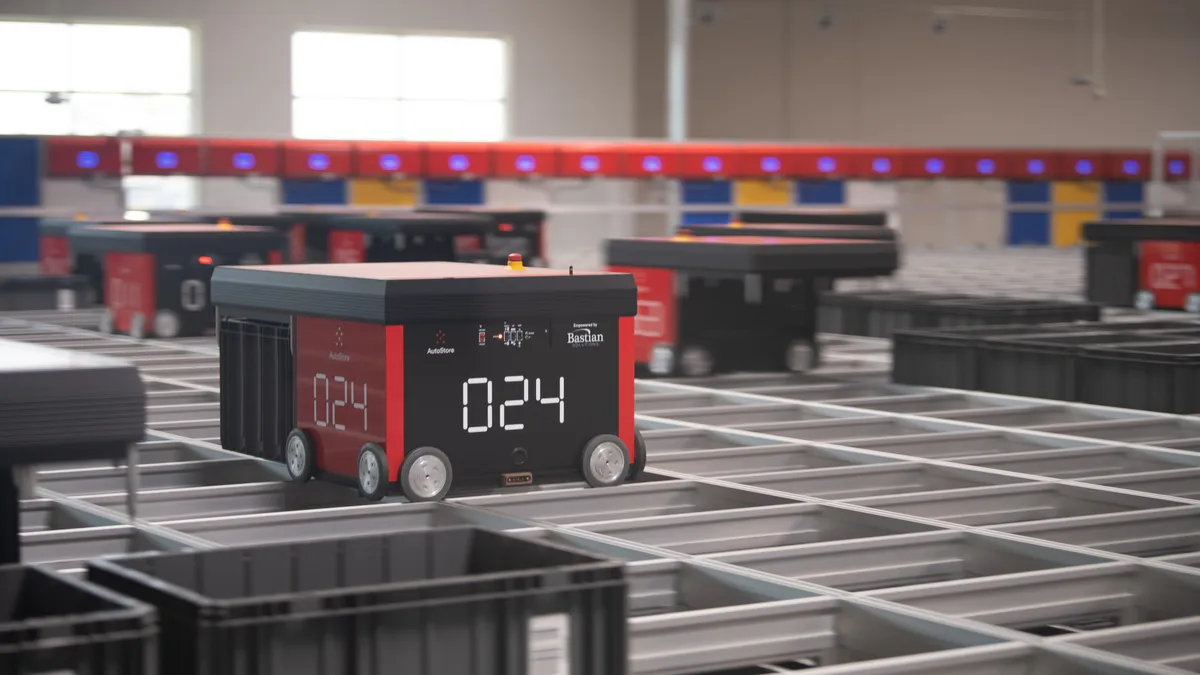Without a doubt, microfulfillment is one of the hottest trends in supply chain. The ability to get products into consumers’ hands quicker than your competitors is the ultimate leg up, so not only is it a trend, but it’s a strategy enabling today’s retailers to decentralize fulfillment, create a better customer experience and redefine the retail landscape. So, what is it?
Microfulfillment is a strategy for fulfilling customer orders from retail store locations near the customer. Dense, scalable and flexible storage and picking solutions inside neighborhood stores allow retailers to quickly fulfill customer orders while reducing final-mile costs and meeting customer demand for “right now” products.
According to Forbes, since the COVID-19 pandemic, total online spending surged to more than $82 billion in May of 2020, and buy-online, pick-up in-store (BOPIS) orders grew 195%. According to their data, it would’ve taken 4-6 years to reach that spending level in “normal” circumstances.
This growth in ecommerce led to a necessary evolution in traditional retail fulfillment, with distribution centers (DCs) shifting processes to accommodate for drop-shipping to end-users and shipping each orders directly to stores for customer pickup. The term ‘microfulfillment’ gained a whole new meaning thanks to the pandemic.
Exploring microfulfillment applications
There are multiple ways to accomplish microfulfillment, and each solution will look different depending on the needs of the retailer and their customers, and pandemic pressures brought on – which look different for each industry.
While the term microfulfillment is mainly used to reference online order fulfillment from existing store locations, it can also be used for a few similar strategies like dark stores or customer fulfillment centers.
In-Store Microfulfillment
In-store microfulfillment was born out of necessity in the grocery space, but its applicability has expanded to other retail industries as well. With the increase in buy-online, pick-up-in-store (BOPIS) shopping, common brick and mortar stores shifted efforts in backrooms from just stocking shelves to also helping fill these orders. Then, COVID-19 hit, and demand for this type of shopping grew exponentially.
In order to prevent employees who are filling online orders from crowding store aisles and free up space for in-store shoppers, a backroom ‘warehouse’ may be a more efficient and less crowded option. In grocery applications, these can typically support up to $10 million in sales per location and increase order fulfillment speed by 50 - 100 percent due to efficiency increases in picking speed from the backroom’s compact product slotting. Add in an automated fulfillment solution, and you could hit a 200 percent increase in throughput! These options may require an expansion of the backroom area, additional storage space and hiring more associates to fill orders.
Dark Stores
Another microfulfillment strategy uses dark stores. These are small fulfillment centers located in retail spaces that operate without customer interaction. One location option is often using a strip mall anchor store converted to a mini-warehouse dedicated to short-turnaround fulfillment.
There are a few different ways that dark stores could fulfill online orders. They could deliver to customers directly, deliver to local stores for customers to pick up, or have customers pick up orders curbside. A typical dark store for a grocery application could accommodate about $50 million in online sales, a 200 percent productivity improvement with manual picking and a 300 percent improvement with automation.
So, what technologies can be used in microfulfillment?
The order profile of a facility should drive technology selection. There is a large difference in the optimum technology for a high-speed, centralized fulfillment center compared to a medium-rate dark store or an in-store microfulfillment center. Real estate costs for various strategies will also influence the overall return on investment for different technologies.
Also, one of the driving factors will be the customer experience, largely impacted by fulfillment speed. Recent years have seen consumer desires for retail fulfillment (including shipping) to be only two days. Even more recently, certain industries are striving for next-day, same-day, or even on-demand fulfillment. What used to be considered “fast” only a few years ago has become the standard. While de-centralized fulfillment allows for unprecedented speed, it also comes with a cost to get the product closer to the consumer, as seen in the table below.

Just as various business requirements will drive different fulfillment strategies, those strategies will have different optimal technologies. While a thorough analysis is required to understand the unique aspects of any business and properly identify the right equipment (or combination of equipment in a hybrid solution), some typical applications could be:

What types of retailers are a good fit?
Grocery is the industry where these technologies are making an immediate impact. AutoStore is currently able to manage refrigerated goods, and frozen won’t be far behind. However, mini-load systems and pick modules, while not as dense as robotic fulfillment systems like AutoStore, complement these systems well to handle frozen goods. Other retailers in spaces like beauty, electronics, sporting goods or clothing may see a benefit in urban areas where final mile costs are high and space is limited.
Is Microfulfillment the ultimate solution?
Not always! Final-mile costs will make or break the return on investment for microfulfillment. Customers may not be willing to go out of their way to pick up from a certain location (if delivery or intra-network retail logistics aren’t used), current stores may need too many expansions to accommodate, and if the location is too far from customers, shipping costs may render the point moot. Another sticking point to consider are third-party apps (e.g., Instacart, DoorDash, Postmates, etc.) working with new or existing software.
In certain situations, a retailer considering microfulfillment may find that increasing throughput or changing footprints in existing, traditional fulfillment facilities will get products to customers within an acceptable timeline for their business model. Again, it is not a “one size fits all” application in any aspect. Consulting studies providing thorough data analysis and even system simulations are highly recommended before microfulfillment should be considered.






